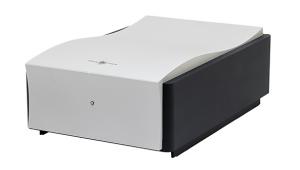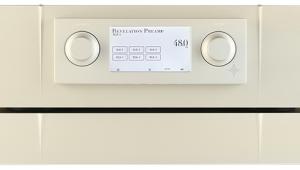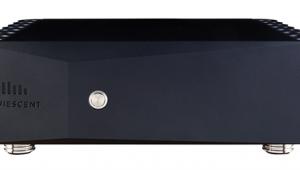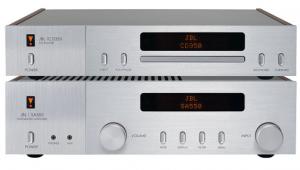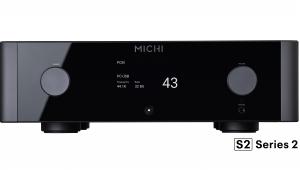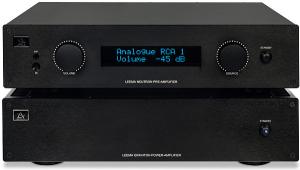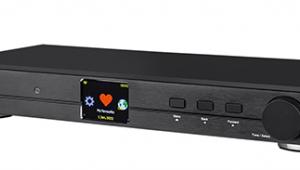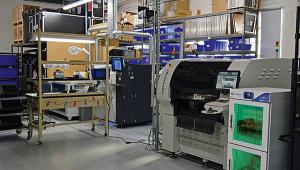Musical Fidelity Tri-Vista kWP and kW Amplifiers
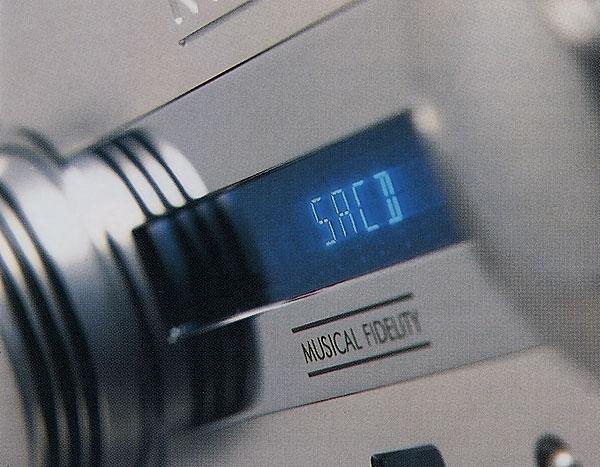
 Ian Harris and Paul Miller hear the amps that crown MF's 20th anniversary
Ian Harris and Paul Miller hear the amps that crown MF's 20th anniversary
The kW and kWP are the final models in Musical Fidelity's 20th anniversary Tri-Vista series, and are intended to be the ultimate expression of the company's skills as amplifier builders. In contrast to the nominally 'real world' SACD player and integrated amp, the pre and power amps have been built on a totally cost-no-object basis – to borrow MF's own words, they're 'simply the very best we can do'.
As befits such limited edition 'statement' products, the build quality is beyond reproach. Like the Tri-Vista models that came before, each case sports a 'Moonstone' front panel, although there are some subtle differences. The panels are even thicker (13mm) and have a uniform brushed finish in place of the part-smooth, part-burnished fascias of the junior members of the dynasty. Logos are laser engraved, rather than printed and, on the monoblocks, the kW logo is underlined with an illuminated violet-blue bar.
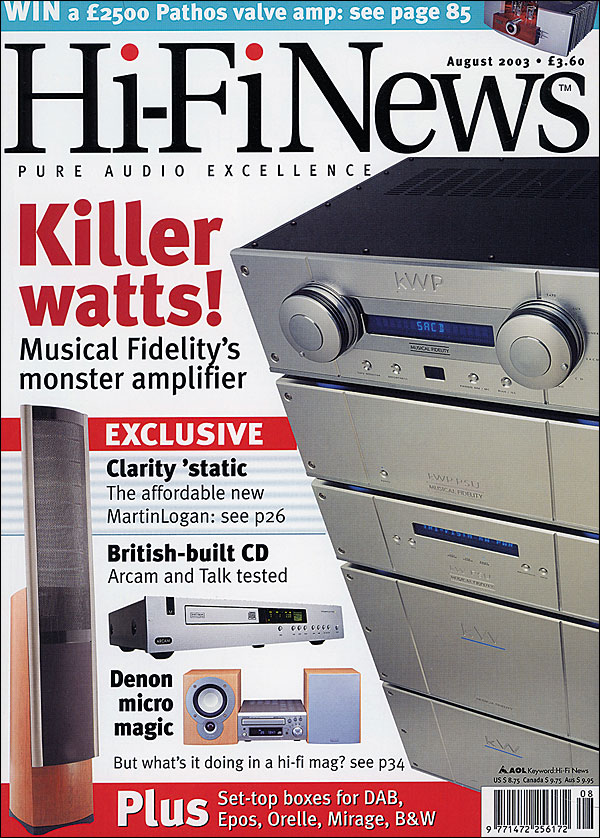
On Display
While all five boxes (preamp and its PSU, plus dual monoblocks with shared PSU) are beautiful to behold, the preamp still stands out as the 'looker' of the family, the clean, simple design combined with the sumptuous finish giving it a rather Art Deco look. Volume and Source Select dials flank a vacuum fluorescent display (showing input selected or, following volume adjustments, output level in dB).
Remaining control options are served by four nicely damped push buttons (tape monitor, display brightness, MM or MC, RIAA or IEC phono curves). The kWP comes with a remote, though this was not ready in time for the review.
Down To Zero
The power amp consists of a pair of 485x320x450mm (whd) monoblocks plus a separate power supply unit measuring 485x170x365mm (whd). Musical Fidelity chose a monoblock configuration as the only option for ultimate levels of imaging, but then went one stage further by also using a separate power supply unit. As well as ensuring that the two huge 2kW transformers don't interfere with delicate signals, the dual-mono PSU is said to further aid perfect imaging by ensuring that the 'zero volts' of both amplifiers are identical.
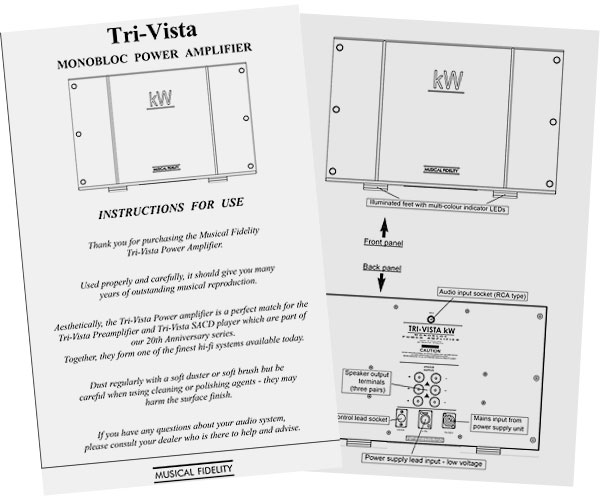
Connections between the PSU and each monoblock include low voltage DC (control circuits), high voltage DC (output stages), and AC (driver stages). This last connection reveals one of MF's solutions to the problem of building a hugely powerful amp with the speed and subtlety of low-power competitors. The company's research has shown that, at low output levels, the performance of an amp's driver stage is thrown under the spotlight.
So the kW has independent Class A driver stages, each with its own transformer. These are said to give extremely low distortion, low phase shift and low noise, while still boasting very low feedback [see PM's Lab Report, p129]. The combination of carefully optimised driver circuits and the huge choke-regulated output stages are said to be the key to the kW's 'best of both worlds' performance.
Meanwhile, the kWP preamp consists of two identically sized boxes (485x170x380mm, whd), the outboard PSU mimicking the kW's in its contents: individual transformers for each channel plus a common unit for control circuits. Inside the preamp itself, the dual-mono concept is taken to the limit, with each channel having its own PCB, input socketry and selector. As a final touch, each channel is contained in its own mu-metal box within the main casework, ensuring that there can be no 'air leakage' of signal from one channel to another.
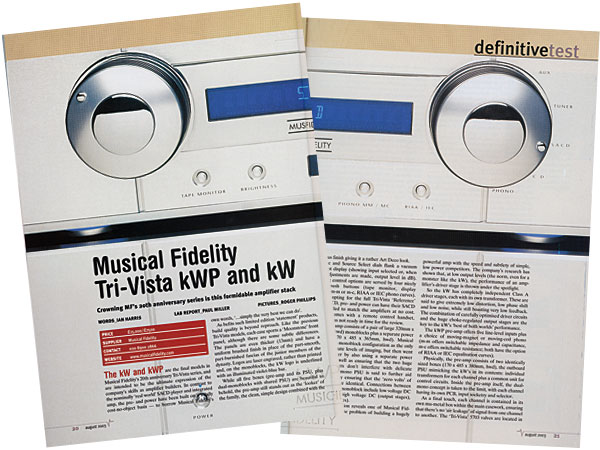
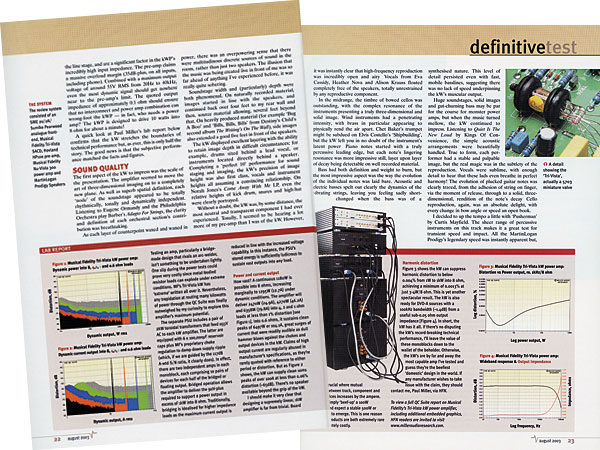
The 'Tri-Vista' 5703 valves are located in the line stage, and are a significant factor in the kWP's high input impedance. The preamp claims a massive overload margin (35dB-plus, on all inputs, including phono). Combined with a maximum output voltage of around 55V RMS from 20Hz to 40kHz, even the most dynamic signal should get nowhere near the preamp's limit. The quoted output impedance of around 0.1ohm should also ensure no interconnect and power amp combination can wrong-foot the kWP – in fact, who needs a power amp? The kWP is designed to drive 10W into 8ohm for about a minute!
![]() Sound Quality
Sound Quality
Used with a Hovland HP100 preamp, the first aspect of the kW to impress was the scale of the presentation. The amp seemed to move the art of three-dimensional imaging on to a completely new plane. As well as superb spatial definition, each 'node' of the soundstage appeared to be both tonally and dynamically independent. Listening to Eugene Ormandy and The Philadelphia Orchestra play Barber's Adagio for Strings, the clarity and definition of each orchestral section's contribution was simply breathtaking.
As each layer of counterpoint waxed and waned in power there were multitudinous discrete sources of sound in the room, rather than just two loudspeakers.
Free To Air
It was also clear that high-frequency reproduction was incredibly open and airy. Vocals from Eva Cassidy, Heather Nova and Alison Krauss, played from both vinyl and digital sources, floated completely free of the speakers, totally unrestrained by any reproductive component. In the midrange, the timbre of bowed cellos was outstanding, with the complex resonance of the instruments presenting a truly three-dimensional and solid image. Wind instruments had a penetrating intensity, with brass in particular appearing to physically rend the air apart.



